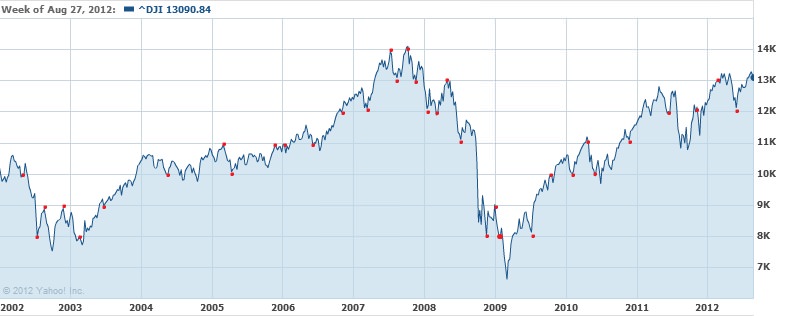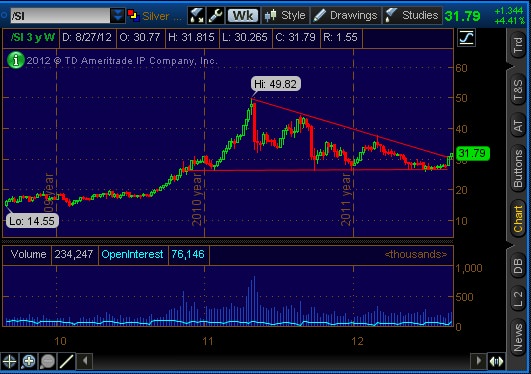What’s Another $100 Million?
Yesterday I was alerted to a libertynews.com story regarding the house approval of another $100 million in taxpayer dollars for USEC Inc. (NYSE:USU). This was a stock I traded back in February of this year, buying Put options and banking when it went from $1.93 on Feb 1 down to $1.28 on Feb 10. It closed yesterday at 50 cents per share, today at 54 cents. This makes the current market cap of the company about $65 million, not even two-thirds of the amount of money it’s being given.
What’s worth noting is that the price-to-book ratio on this company is .09, which means its worth $65 million despite having over $700 million in net tangible assets. Taken at face value, USEC is worth more if it goes under than if it continues its operations. But I would have to question, if this is true, why doesn’t Mitt Romney just come along, offer to buy all outstanding shares at triple current market price thereby taking over the company, close the doors, and sell it off for a cool $500 million profit on a $200 million investment?
I’ll be honest. I don’t know the first thing about this company. I don’t know exactly what their plant looks like, what it could re-sell for, what constitutes its inventory, et cetera. What I do know is price action. Its chart is that of a dying company, and its price-to-book ratio tells me the company has been very generous in the valuation of its own assets. It’s not worth anything in-business, and it’s not worth anything out-of-business.
Maybe news of their cash infusion will cause nice multi-day spike in its stock price creating a shorting opportunity. But I warn time and time again, there’s no limit to how high the price of worthless paper can go. Now is not the time to jump the gun on shorting this stock, but this is definitely one to watch. Something to consider is the fact that USEC received a de-listing warning from the New York Stock Exchange back in April when its stock price fell under $1, so there’s likely to be a push to get it back up over $1. It could go to $5 and still maintain a market cap below its book value. I think it’s unlikely to break $1 because there are so many bag-holders, including Vanguard whose position in USEC near as I can tell dropped in value from around $13 million to about $7 million in the past 3 months.




Recent Comments